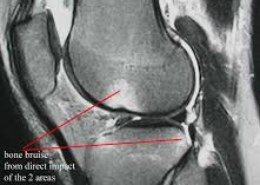Does cartilage show up on MRI?
MRI on cartilage
MRI stands for magnetic resonance imaging. It’s a type of scan that uses a magnetic field, radio waves, and a computer to create detailed pictures of the inside of your body.
Unlike an X-ray, which takes pictures of your bones, a knee MRI lets your doctor see your bones, cartilage, tendons, ligaments, muscles, and even some blood vessels. The test can show a range of problems, including:
- Damaged cartilage
- Torn tendons or ligaments
- Bone fractures
- Osteoarthritis
- Infections
- Tumors
Your doctor may also order an MRI to see if you need knee surgery, or to see how well you’re healing after surgery.
Processes of an MRI-Cartilage
A typical MRI machine looks like large, hollow tube. Wearing a hospital gown or loose-fitting clothes, you’ll lie on an exam table that slides into the tube. For a knee MRI, you’ll go in feetfirst, and only your lower body will be in the tube. Expect to hold still for around 15 to 45 minutes, sometimes longer, while the machine makes images of your knee.
In some cases, you’ll get a special dye injected into your arm before the exam. It’s called a contrast agent, and it helps make the images of your knee even clearer. You may feel a cool sensation after you get the injection.
During the exam, you’re usually alone in the room. An MRI technologist will be outside, performing the exam from a computer. She can see you the whole time and will talk to you via a two-way intercom.
You won’t feel anything during the scan. But if it’s your first MRI, you may be surprised by how loud it is. The machine makes thumping, knocking, and humming sounds. The technologist will probably offer you headphones or earplugs. If she doesn’t, you can ask for them.
After the exam, the technician will send images to a radiologist, who will send a report to your doctor. You’ll be able to drive yourself home and continue your day as you normally would.
Precautions to take on MRI
- Jewelry
- Hairpins
- Zippers
- Body piercings
- Watches
- Hearing aids
- Pocketknives
- Eyeglasses
If you have metal inside your body, like from shrapnel or a medical device, be sure to tell your doctor or the technologist about it before you have the MRI. You may still be able to get the test. But there are some types of metal implants that mean you should not get the test:
- Cochlear implant
- Most cardiac defibrillators and pacemakers
- Some types of metal clips, such as those that treat brain aneurysms
Credit:https://www.webmd.com/pain-management/knee-pain/what-expect-knee-mri#1



Leave an answer
You must login or register to add a new answer.